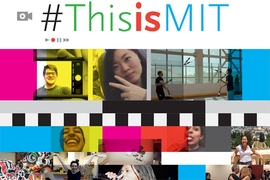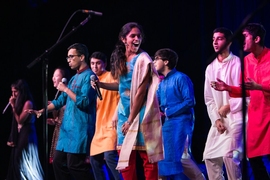For the first time during MIT’s Independent Activities Period (IAP), the MIT Bhangra Dance Team held a series of dance workshops for the MIT community.
More than two dozen students packed into McCormick Hall’s dance studio to learn step-by-step choreography prepared by two Bhangra dance team members, MIT juniors Rishi Sundaresan and Tarun Kamath.
“We decided to have these workshops during IAP because we figured people at MIT would have more free time,” says Divya Goel, senior and co-captain of MIT Bhangra. “I think we had one of the biggest turnouts ever because of this, which is awesome.”
Bhangra, which originates from the state of Punjab in northern India, is a high-energy, upbeat folk dance that was traditionally performed at harvest festivals or celebrations. With its global growth in popularity in recent years, bhangra has now become a competitive dance form throughout the world.
MIT Bhangra started in 1991 with a mission to spread and share bhangra traditions and culture. Kamath says he joined the dance group because he wanted a community where he could have fun and de-stress, but it turned into something bigger.
“Being part of a dance team starts out as loving the dance form, but what it becomes is a community and a family that you can appreciate for many years,” he says.
In addition to their performances on campus and dance competitions, each summer the group hosts Summer Bhangra, a twice-weekly summer dance workshop for people of all ages and skill levels in the Greater Boston area.
“Knowing that we’re able to teach people so quickly and seeing everyone happy from learning this dance style is really rewarding,” says Goel.
Kamath says that at the end of the day, it’s about more than learning the dance moves.
“If you can walk out of the dance workshop and had a fun two hours, then that’s the best thing that can be said.”










